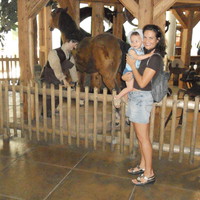
Giorgia Proietti
I am Assistant Professor in Greek History at the Department of Humanities of the University of Trento, and Coordinator of the Interdepartmental Lab Memory and Society at the same University (https://www.lettere.unitn.it/3298/interdepartmental-laboratory-memory-and-society-lims). I have studied in Athens and London, obtained my PhD in Trento (2014), and held postdoctoral fellowships in Edinburgh and Genève.
My research interests mainly focus on ancient Greek history, epigraphy, and topography, on the one hand, and comparative history, on the other. Concerning the former, I am particularly interested in 5th century Athenian history, especially in war and war related phenomena, and their different means of representation and memorialization (historiography, inscriptions, monuments, space, rituals, oracles, and public discourse). Concerning the latter, I am especially interested in the commemoration of war, war trauma, and collective emotions on post war time in a comparative perspective between antiquity and today. In both fields of research my theoretical and methodological background is deeply affected by a socio-anthropological approach, in particular by memory studies.
I have co-edited four books concerning the memory of war, the last approaching the topic from a comparative perspective: ‘Commemorating war and war dead. Ancient and modern’ (Steiner Verlag: Stuttgart 2019). My first monograph ‘Prima di Erodoto. Aspetti della memoria delle Guerre Persiane’ (with a preface by N. Luraghi) was published in 2021 as a Hermes Einzelschrift (Steiner Verlag: Stuttgart).
In April 2021 I obtained the 'ASN-Abilitazione Scientifica Nazionale' as an Associate Professor in Greek History.
Currently, I am Principal Investigator of the PRIN project 2022 "Memory and Space in ancient Athens. Topography, Monuments, Mindscapes" (with E. Rosamilia, Perugia) and I am co-editing (with J. McInerney) a collection of essays dedicated to memory and space in ancient Greece which will be published by Brill as a Mnemosyne Supplement.
In parallel, I am also collaborating to a PRIN project on Greek divination, focusing on the relationship between oracles, historiography, and social memory (PI M. Giangiulio). A first collection of essays has been published as Oracoli delfici e storia greca (eds. M. Giangiulio, G. Proietti, Trento 2024), another dossier is going to appear in the forthcoming issue of the journal Mythos, whereas an ambitious wide-ranging collection of commented oracles is forthcoming with a major international press.
My research interests mainly focus on ancient Greek history, epigraphy, and topography, on the one hand, and comparative history, on the other. Concerning the former, I am particularly interested in 5th century Athenian history, especially in war and war related phenomena, and their different means of representation and memorialization (historiography, inscriptions, monuments, space, rituals, oracles, and public discourse). Concerning the latter, I am especially interested in the commemoration of war, war trauma, and collective emotions on post war time in a comparative perspective between antiquity and today. In both fields of research my theoretical and methodological background is deeply affected by a socio-anthropological approach, in particular by memory studies.
I have co-edited four books concerning the memory of war, the last approaching the topic from a comparative perspective: ‘Commemorating war and war dead. Ancient and modern’ (Steiner Verlag: Stuttgart 2019). My first monograph ‘Prima di Erodoto. Aspetti della memoria delle Guerre Persiane’ (with a preface by N. Luraghi) was published in 2021 as a Hermes Einzelschrift (Steiner Verlag: Stuttgart).
In April 2021 I obtained the 'ASN-Abilitazione Scientifica Nazionale' as an Associate Professor in Greek History.
Currently, I am Principal Investigator of the PRIN project 2022 "Memory and Space in ancient Athens. Topography, Monuments, Mindscapes" (with E. Rosamilia, Perugia) and I am co-editing (with J. McInerney) a collection of essays dedicated to memory and space in ancient Greece which will be published by Brill as a Mnemosyne Supplement.
In parallel, I am also collaborating to a PRIN project on Greek divination, focusing on the relationship between oracles, historiography, and social memory (PI M. Giangiulio). A first collection of essays has been published as Oracoli delfici e storia greca (eds. M. Giangiulio, G. Proietti, Trento 2024), another dossier is going to appear in the forthcoming issue of the journal Mythos, whereas an ambitious wide-ranging collection of commented oracles is forthcoming with a major international press.
less
Related Authors
Elena Franchi
University of Trento
Bernd Steinbock
Western University Canada
Mariagrazia Divincenzo
Università di Bologna
Michael Castellino
Università degli Studi di Torino
Nikolaus Dietrich
Universität Heidelberg
Mark Thorne
Luther College
Matteo Barbato
Università degli Studi di Milano - State University of Milan (Italy)
Nathan Arrington
Princeton University
Stefania De Vido
Università Ca' Foscari Venezia
InterestsView All (112)










Uploads
Books by Giorgia Proietti
Andando a riempire una lacuna nella ricerca attuale, il libro prende le mosse dalla consapevolezza per cui le Guerre persiane così come sono raccontate nelle Storie di Erodoto non corrispondono esattamente alla storia fattuale, ma sono invece l'esito di un processo multiforme e stratificato di memorializzazione, che decennio dopo decennio ha riplasmato gli eventi alla luce delle esigenze presenti. Combinando un approccio filologico alla documentazione letteraria, epigrafica e archeologica con un panorama teorico e metodologico influenzato dall'antropologia culturale e dagli studi sulla memoria, esso ricostruisce le immagini e i significati associati a ciascuno strato di tale processo, offrendo così una sorta di 'stratigrafia della memoria' delle Guerre persiane prima di Erodoto.
Edited books by Giorgia Proietti
Articles on journals by Giorgia Proietti
En la época clásica, los atenienses muertos en la guerra eran enterrados en el suburbio del Kerameikos, dentro de un lugar que actualmente se define, después de Thuc. 2.34.5, como Demosion Sema, o Mnema, según Paus. 1.29.4. En el contexto de la reciente reevaluación general de esta área funeraria, que ya no se concibe como un cementerio militar nacional en el sentido moderno, sino como un más matizado “espacio para los caídos”, este artículo sostiene que las expresiones demosion sema (tumba pública) y mnema (monumento) se han tomado arbitrariamente para referirse al área funeraria en su conjunto. A la luz de un análisis textual renovado de los contextos narrativos de Tucídides y Pausanias, así como de un estudio de sus ediciones y traducciones existentes, este trabajo sugiere que este “espacio” no tenía un nombre más específico que el nombre del “suburbio más bello de la ciudad” donde se encontraba, el Kerameikos.
historical memory in late Archaic and early Classical Greece, and to
investigate the memory of the Persian wars in their immediate aftermath,
with regard to the interdisciplinary research on the multiplicity,
multipolarity and competitiveness of collective memory in both ancient and
modern history. First, it surveys the extant epigraphic and literary sources
dating to the 70s and 60s of the 5th century (Simonides, Aeschylus and
Pindar), which attest to the memory of the second Persian war by several
poleis who had played a part in them, and shows that each polis stressed its
own contribution to the freedom of Greece in the war against Xerxes,
without claiming any exclusive role in it. Second, relying on the notion of
‘competing memories’, it argues that in the first two post-war decades the
memory of the Persian wars developed according to a 'poli-hellenic'
configuration: each polis did not refer to a shared, panhellenic memory,
transcending the local perspective, but to a panhellenic competitive scenario,
where their emphasis on their own merits coexisted in the framework of a
paratactic and inclusive relationship (that is neither hierarchical nor
exclusive, as it later appears, instead, from Herodotus' account).
This paper is divided into three parts. First, it tries to show, in light of Solon's words in Herodotus' Histories, that the concept of olbos does not entirely refer to the world either of the living or the dead, but points to a condition of prosperity which is intrinsically linked to the concept of teleuté: olbos develops during lifetime but must be kept safe until death. As Herodotus' Solon also shows through the example of Tellus, death on the battlefield is one of the ways by which 5th century Athenians could end life well and acquire the status of olbioi.
Second, the paper shows, in light of both the concept of olbos and the connection between kleos (fame) and floral imagery in epinician poetry, that the panthales olbos of the war dead points to the sphere of the immortal fame, which is constantly revived by the Athenian civic community.
Third, the paper contrasts the panthales olbos of the Athenian war dead in the epigram with the peculiar recurrence of olbos in contemporary Aeschylus’ Persians (472 B.C.), where the Persians’ defeat is depicted in terms of loss of prosperity. I suggest that Aeschylus - possibly reflecting a feature of the Athenian culture of victory of that time - paired, in a significant opposition, the olbos of their own war dead and that of the Persians: the latter ruined, the former flourishing.
In questo articolo discuto lo status quaestionis e confermo la mia interpretazione della stele come frutto dell'agglutinamento di due fasi memoriali diverse. La prima fase, riconducibile all'immediato dopoguerra, è espressa dall'elenco di nomi, con la sua peculiare configurazione che riproduce la disposizione 'sfalsata' della formazione oplitica e richiama il tema della difesa della polis, garantita dal 'muro di soldati' messo in campo a Maratona, mentre la seconda, collocabile dopo la Seconda Guerra Persiana, è espressa dall'epigramma, i cui contenuti appaiono coerenti con la riplasmazione di Maratona nella memoria civica ateniese alla luce degli eventi panellenici del 480/79.
In the last years several studies have been published concerning the stele of the Marathonomachoi, which was found in 1999 in Herodes Atticus' villa at Eua-Loukou, in the eastern Peloponnese. The stele, which is inscribed with the name of the tribe Erechtheis, a four lines epigram, and a casualty list, must be dated, on a paleographical basis, to the time of the Persian wars. The stele has been attributed to the polyandrion of the Marathonomachoi on the battlefield, and specifically dated either in 490 (Spyropoulos, Steinhauer) or in the '70s (Culasso, Petrovic, Tentori Montalto).
In my own previous contributions on the topic I tackled both these interpretations and suggested a more nuanced reading of the stele, which in my view testifies to two different stages of the memory of the Marathon battle. In other terms, I explored the possibility that the stele was originally inscribed only with the tribe name and the list of fallen, and the epigram was added some time after 480/79 (although possibly by the same hand).
In this paper I will discuss the status quaestionis and confirm my interpretation of the stele as attesting to the memory of Marathon both in its immediate aftermath and after the second Persian war. The former is expressed by the list, with its peculiar layout resembling the hoplitic formation and recalling the theme of the defence of the polis, while the latter is expressed by the epigram, whose contents appear to be consistent with how the battle of Marathon was reshaped by the Athenian civic memory in light of the panhellenic events in 480/79.
ERRATA CORRIGE: The stele is not lost, as according to the IG and most current bibliography, but is inventoried in the Archaeological Museum of Megara. An errata corrige concerning this matter is forthcoming in AXON 4, 1 (2020).
Andando a riempire una lacuna nella ricerca attuale, il libro prende le mosse dalla consapevolezza per cui le Guerre persiane così come sono raccontate nelle Storie di Erodoto non corrispondono esattamente alla storia fattuale, ma sono invece l'esito di un processo multiforme e stratificato di memorializzazione, che decennio dopo decennio ha riplasmato gli eventi alla luce delle esigenze presenti. Combinando un approccio filologico alla documentazione letteraria, epigrafica e archeologica con un panorama teorico e metodologico influenzato dall'antropologia culturale e dagli studi sulla memoria, esso ricostruisce le immagini e i significati associati a ciascuno strato di tale processo, offrendo così una sorta di 'stratigrafia della memoria' delle Guerre persiane prima di Erodoto.
En la época clásica, los atenienses muertos en la guerra eran enterrados en el suburbio del Kerameikos, dentro de un lugar que actualmente se define, después de Thuc. 2.34.5, como Demosion Sema, o Mnema, según Paus. 1.29.4. En el contexto de la reciente reevaluación general de esta área funeraria, que ya no se concibe como un cementerio militar nacional en el sentido moderno, sino como un más matizado “espacio para los caídos”, este artículo sostiene que las expresiones demosion sema (tumba pública) y mnema (monumento) se han tomado arbitrariamente para referirse al área funeraria en su conjunto. A la luz de un análisis textual renovado de los contextos narrativos de Tucídides y Pausanias, así como de un estudio de sus ediciones y traducciones existentes, este trabajo sugiere que este “espacio” no tenía un nombre más específico que el nombre del “suburbio más bello de la ciudad” donde se encontraba, el Kerameikos.
historical memory in late Archaic and early Classical Greece, and to
investigate the memory of the Persian wars in their immediate aftermath,
with regard to the interdisciplinary research on the multiplicity,
multipolarity and competitiveness of collective memory in both ancient and
modern history. First, it surveys the extant epigraphic and literary sources
dating to the 70s and 60s of the 5th century (Simonides, Aeschylus and
Pindar), which attest to the memory of the second Persian war by several
poleis who had played a part in them, and shows that each polis stressed its
own contribution to the freedom of Greece in the war against Xerxes,
without claiming any exclusive role in it. Second, relying on the notion of
‘competing memories’, it argues that in the first two post-war decades the
memory of the Persian wars developed according to a 'poli-hellenic'
configuration: each polis did not refer to a shared, panhellenic memory,
transcending the local perspective, but to a panhellenic competitive scenario,
where their emphasis on their own merits coexisted in the framework of a
paratactic and inclusive relationship (that is neither hierarchical nor
exclusive, as it later appears, instead, from Herodotus' account).
This paper is divided into three parts. First, it tries to show, in light of Solon's words in Herodotus' Histories, that the concept of olbos does not entirely refer to the world either of the living or the dead, but points to a condition of prosperity which is intrinsically linked to the concept of teleuté: olbos develops during lifetime but must be kept safe until death. As Herodotus' Solon also shows through the example of Tellus, death on the battlefield is one of the ways by which 5th century Athenians could end life well and acquire the status of olbioi.
Second, the paper shows, in light of both the concept of olbos and the connection between kleos (fame) and floral imagery in epinician poetry, that the panthales olbos of the war dead points to the sphere of the immortal fame, which is constantly revived by the Athenian civic community.
Third, the paper contrasts the panthales olbos of the Athenian war dead in the epigram with the peculiar recurrence of olbos in contemporary Aeschylus’ Persians (472 B.C.), where the Persians’ defeat is depicted in terms of loss of prosperity. I suggest that Aeschylus - possibly reflecting a feature of the Athenian culture of victory of that time - paired, in a significant opposition, the olbos of their own war dead and that of the Persians: the latter ruined, the former flourishing.
In questo articolo discuto lo status quaestionis e confermo la mia interpretazione della stele come frutto dell'agglutinamento di due fasi memoriali diverse. La prima fase, riconducibile all'immediato dopoguerra, è espressa dall'elenco di nomi, con la sua peculiare configurazione che riproduce la disposizione 'sfalsata' della formazione oplitica e richiama il tema della difesa della polis, garantita dal 'muro di soldati' messo in campo a Maratona, mentre la seconda, collocabile dopo la Seconda Guerra Persiana, è espressa dall'epigramma, i cui contenuti appaiono coerenti con la riplasmazione di Maratona nella memoria civica ateniese alla luce degli eventi panellenici del 480/79.
In the last years several studies have been published concerning the stele of the Marathonomachoi, which was found in 1999 in Herodes Atticus' villa at Eua-Loukou, in the eastern Peloponnese. The stele, which is inscribed with the name of the tribe Erechtheis, a four lines epigram, and a casualty list, must be dated, on a paleographical basis, to the time of the Persian wars. The stele has been attributed to the polyandrion of the Marathonomachoi on the battlefield, and specifically dated either in 490 (Spyropoulos, Steinhauer) or in the '70s (Culasso, Petrovic, Tentori Montalto).
In my own previous contributions on the topic I tackled both these interpretations and suggested a more nuanced reading of the stele, which in my view testifies to two different stages of the memory of the Marathon battle. In other terms, I explored the possibility that the stele was originally inscribed only with the tribe name and the list of fallen, and the epigram was added some time after 480/79 (although possibly by the same hand).
In this paper I will discuss the status quaestionis and confirm my interpretation of the stele as attesting to the memory of Marathon both in its immediate aftermath and after the second Persian war. The former is expressed by the list, with its peculiar layout resembling the hoplitic formation and recalling the theme of the defence of the polis, while the latter is expressed by the epigram, whose contents appear to be consistent with how the battle of Marathon was reshaped by the Athenian civic memory in light of the panhellenic events in 480/79.
ERRATA CORRIGE: The stele is not lost, as according to the IG and most current bibliography, but is inventoried in the Archaeological Museum of Megara. An errata corrige concerning this matter is forthcoming in AXON 4, 1 (2020).
Come è noto, L’invention d’Athènes di Nicole Loraux (1981) ha inaugurato una nuova interpretazione dell’orazione funebre ateniese. Ogni anno il logos epitaphios trasmetteva una immagine patriottica degli Ateniesi, incentrata su una lista canonica di eventi gloriosi di natura miti-storica. Questa lista, il cosiddetto Tatenkatalog, è stato sinora indagato in termini di propaganda politica o di ‘official polis tradition’, dunque sulla scorta di paradigmi che implicano una semplificazione, talora falsificazione, della realtà storica. Questa lettura, se in una certa misura valida per la versione trasmessa dalle fonti letterarie di IV secolo, deve essere invece rivista a proposito del catalogo di V secolo, che deve essere invece inteso come un esempio calzante di ‘storia intenzionale’ (secondo la definizione di H.-J. Gehrke), prodotto da –e allo stesso tempo rivolta a- la comunità politica stessa, alla luce di una complessa trama di esigenze identitarie.
Quale ‘storia’ relativa a Maratona il testo racconti, è tuttavia incerto. Comunemente edito secondo tentativi di lettura avanzati decine di anni fa, spesso scaturiti da approcci poco sensibili a un orizzonte storico complessivo e alla problematica della memoria pre-storiografica delle Guerre Persiane, il testo epigrafico offre in realtà una rappresentazione della battaglia di Maratona sintetica, non scevra di tratti già narrativi, simile nei suoi contenuti a quella della Stoa Poikile, di poco successiva, e a quella più tardi proposta da Erodoto.
The aim of this paper is twofold. First, it traces a fundamental distinction between the case of the founders and that of the war dead: while the former, in some cases actually received a commemorative contest every year, the latter received it only once, at the time of their burial. Second, by contextualizing annual games among other kinds of public rituals addressed to war dead and founders, the article explores their different meanings and functions in terms of civic memory and identity.
After briefly reviewing the treatment of the Persian sack in extant literature (§1) and setting it in the framework of trauma studies (§2), it focuses on three different types of evidence - sacred spolia (§3), commemoration of the war dead (§4), and post-war theatre (§5) - which allow to look into the Athenians’ reactions, feelings, memories, and fears in the aftermath of the Persian sack, as well as their ways of working through trauma. Based on theoretical and methodological insights from trauma studies themselves, as well as the so-called sociology of disaster, it eventually concludes that the extraordinarily dramatic destruction of the city came to represent an epochal break in the Athenians’ perception of their own history, as well as an anchor of their renewed identity as a civic community (§6).
multidisciplinare sul rapporto tra memoria e storia. In particolare, esso si sofferma su due concetti e strumenti euristici, quello di ‘mnemostoria’ (coniato di J. Assmann) e quello di ‘storia intenzionale’ (introdotto da H.-J. Gehrke), che appaiono utili a porre sotto la lente di ingrandimento alcuni aspetti delle tradizioni orali sull'arcaismo greco, delle forme, dei mezzi e delle modalità della loro costituzione e trasmissione. Alla luce di ciò, esso offre alcuni spunti per una morfologia delle tradizioni storiche greche, con particolare riferimento, da un lato, alla loro pluralità e plasticità, e dall'altro alla loro intrinseca interrelazione con i contesti comunicativi e performativi, nonché spaziali e monumentali in cui prendono forma, si trasmettono e si trasformano.
especially that of war trauma, can contribute to a re-examination of postwar
psychological and social dynamics in antiquity as well as shed new
light on the traumatic consequences of war for veterans and civilians.
In this paper I detect traces of what I propose to call a “collective war trauma” in the
representation of Persian Wars-related events on the Athenian stage in the
immediate aftermath of the war, thus referring to tragedy as a means of
“cultural catharsis”. The story connected with the Athenians’ desperate
reaction in front of Phrynichus’ Sack of Miletus illuminates the mechanisms,
functions and goals of the tragic representations as a means for the civic community to cope with the impact of war, especially with the dramatic
destruction of Athens.
In particolare, prendendo le mosse dalla letteratura moderna dedicata alla psicopatologia bellica, da un lato, e al filone di ricerca dei cd. trauma studies, dall'altro, questo studio intende in primo luogo individuare alcune tracce del trauma collettivo della guerra per la comunità civica ateniese, in particolare in rapporto ai versanti della distruzione urbana e delle perdite umane. In secondo luogo, esplorare quali sono i coping mechanisms elaborati dalla comunità civica per compensare e superare il trauma della guerra e, allo stesso tempo, fornire ai cittadini nuovi incentivi alla belligeranza, in un'ottica che guarda contemporaneamente al passato e al futuro.
War represents a characterizing feature of ancient societies. This is especially true for Athens in the period between the two Great Wars of the 5th century (the Persian wars and the Peloponnesian war), 50 years of almost permanent conflict. Despite the prevailing attention dedicated by modern scholarship to the celebration of war, this paper deals with the dramatic perception and experience of war by the Athenian civic community during the Pentecontaetia. In light of recent literature concerning the psychopathology of war, on one side, and trauma studies, on the other, this essay aims first at pinpointing traces of collective war trauma within Athenian civic memory, especially concerning urban destruction and human losses. Second, it aims at exploring the coping mechanisms which were developed by the civic community, in order to both balance and win war trauma, and provide citizens with a renovated input to fight, according to a perspective which at the same time looked back to past and forward to future.
Giorgia Proietti focuses on the commemoration of the war dead in Classical Athens. On the one hand, she disputes the common assumption according to which they were honored with a strictu sensu heroic cult and argues instead that they were the recipient of a canonical dead cult, though extended in a civic dimension. On the other hand, she recognizes that they were at the core of a complex web of discursive strategies, which, through time, actually represented them as ‘founding heroes’. The heroic paradigm of the war dead can therefore be grasped only in the light of the fluidity and malleability of the different means of commemoration, notably the level of cultual rituality and that of narration, images and memory.
Elena Franchi advances a new interpretation of the base of a Phocian monument dedicated at Delphi in the IV or III century B.C., commemorating an archaic battle fought against the Thessalians recorded by Herodotus (8.27 ff). This base, which preserves the marks of the statues’ feet and a fragmentary dedication (Syll.3 202B), is likely to be identified with the monument mentioned by Pausanias in 10.1.10, representing the leaders and heroes of that battle. However, most of these leaders and heroes were invented by local post-Herodotean narrative traditions dating to the IV or III century B.C. Hence this monument shows both the Classical and Hellenistic-Roman attitude to reshape the collective memory of an archaic event and the permeability between different means of commemoration.
political, institutional, social, economic, juridical, religious, and cultural.
Accordingly, as the first part of this paper illustrates, modern studies in
ancient polemology have developed along different, though complementary,
currents: war is analyzed as both a crucial moment within military-political
history and as a socio-economical phenomenon; it is considered in both its
religious and widely cultural implications; and, most recently, it is investigated
as a moment of ‘founding’ relevance concerning the social memory and
collective identity of a given community. Starting from the seminal Cadres
sociaux (1925) by the French sociologist Maurice Halbwachs, the investigation
of collective memory in both ancient and modern communities has in fact
undergone an outstanding theoretical development, which, as the second part
of this paper precisely shows, has exponentially increased the directions of
research within classics and the humanities in general. In the last two decades
so-called ‘memory studies’ have been increasingly applied to the study of
war and conflict. This contribution provides modern bibliography on war, on
memory and on war and memory, and tries to pinpoint main themes on the
study of war and memory for future research.
Peloponnesian League went through in the 2nd half of the IV century BC was
due, at least partially, to the awakening of ethnicities, and to consequent
impulses for autonomy in the whole of Peloponnese. Messenian ethnogenesis is
particularly apt to be analyzed through modern tools offered by socioanthropological
research on the themes of collective memory and ethnic
identity. This paper discusses how Nino Luraghi’s research on the ancient
Messenians has rejuvenated the debate between the two main traditional
scholarly positions (‘continuists’ and ‘discontinuists’), both of which now seem
inadequate, and how it helps understand how the Messenians conceived, and to
some extent built, their past.
some new theoretical and methodological tools which have been developed in
the field of both socio-anthropological and medieval historical research, and
concern crucial themes such as collective memory and ethnic identity. This
paper tries to draw a brief summary of these new approaches. As for collective
memory, Maurice Halbwachs’ research on collective memory and Ian
Assmann’s notion of cultural memory both emphasize the social, creative and
present-affected character of the past, which is a social construction aimed at
building and expressing collective identities. As for ethnic identity, Friedrik
Barth’s notion of ethnic boundary and Reinhard Wenskus’ Traditionskern
radically refute the 18th century primordialism and imply instead a situational
concept of ethnicity, which is not biologically or culturally permanently
determined, but is borne out of a dynamic process of ascriptions and selfascriptions
between individuals and communities. Similarly, recent models on
Hellenic ethnicity, such as Jonathan Hall’s and Irad Malkin’s, underline the
subjective, negotiable and contextually built nature of ethnic identity/ies in
ancient Greece.
anthropology have deeply affected historical research on Greek archaism. The
similarity – first pointed out by Oswyn Murray in the 1980s – between oral
tradition in anthropological African societies and in Herodotean historiography
has led to go past the positivistic methodology known as source criticism and
to better understand the way ancient Greeks perceived, preserved and
transmitted their past. This paper first surveys Ian Vansina’s and Jack Goody’s
anthropological studies on the so called homeostasis which characterizes oral
tradition in respect to the present; secondly, it focuses on Hans Joachim
Gehrke’s concept of intentional history, and the tight relation it emphasizes
between collective memory and collective identity. The last part of the paper
describes some case studies (for example, the so-called origines urbis), which
have recently been investigated through the lens of this new methodological
and theoretical approach.
The workshop will take place online (Zoom) on Sept. 11, at 10 am (GMT+2); if you wish to attend, please register here (before Sept. 10, at 12 pm):
https://webapps.unitn.it/form/en/Web/Application/convegni/terzozoom
The programme can be accessed here:
https://webmagazine.unitn.it/evento/lettere/117572/divinazione-e-storia-greca
Nella cornice del LIMS, il neonato Laboratorio Interdipartimentale Memoria e Società dell'Ateneo trentino, si svolgerà da maggio a dicembre un primo ciclo di seminari che renderà conto della ricchezza intrinseca della disciplina, che a Trento è coltivata da anni con particolare interesse e vivacità, in particolare dalla cattedra di storia greca del Dipartimento di Lettere e Filosofia e dal Dipartimento di Sociologia e Ricerca Sociale.
Studiose e studiosi provenienti da diversi ambiti disciplinari racconteranno delle loro ricerche, attività ed esperienze attorno al tema della memoria: si parlerà di memoria europea e migrazioni, di tradizione orale e antropologia, di simboli religiosi e immagini professionali, di musei e discorso pubblico, di magia e letteratura. Gli incontri, a cadenza mensile, si svolgeranno in un clima informale di racconto, ascolto e confronto, e sono aperti a tutti gli interessati.
The awareness of the importance of space within the dynamics of memorialization and commemoration of historical events is also expanding into the field of ancient Greek history. However, this field of investigation is still in its initial phase and is limited in its chronological and geographical horizon (with most contributions to date dealing with Classical Athens, and the Greek Pan-Hellenic sanctuaries). This workshop, which is part of a research project entitled 'Public history in ancient Greece. Archaeology, memory, and mindscapes' which is funded by a Starting grant of the University of Trento (resp. Giorgia Proietti), aims to expand on this exciting research topic, widen its chronological and geographical framework, and advance the debate around the multiple and interwoven issues of memory and space in ancient Greece.
https://webmagazine.unitn.it/evento/lettere/71388/5-treffen-des-netzwerks-historiai-antike-geschichtsschreibung-und